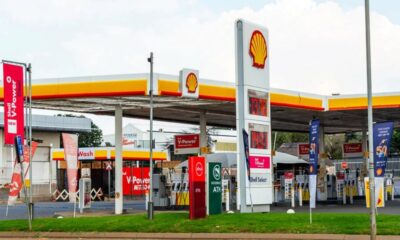Business
Why South Africa’s Economic Engine Is Sputtering And What It Means for All of Us

South Africa’s economy managed to grow by a measly 0.1% in the first quarter of 2025, far below what’s needed to dig the country out of its decade-long economic funk. Even worse, this week’s revision of the country’s overall GDP growth forecast for the year was slashed down to 0.5%. That’s not just a slowdown—it’s a stall.
The post-election optimism that swept through boardrooms and social media timelines last year? It’s rapidly disappearing, replaced with uncertainty and gloom.
The decade that South Africa stood still
Here’s the painful truth: South Africa has been underperforming economically for over 10 years. According to a new review by the Organisation for Economic Co-operation and Development (OECD), average GDP growth since 2013 has been just 0.7%. That’s not even enough to keep pace with population growth.
In real terms, the country is growing poorer.
Economist Lisette IJssel de Schepper from the Bureau for Economic Research (BER) notes that while South Africa’s business cycle had started to show signs of life late last year, it has now swung back into recession territory. The so-called “expansion phase” has vanished—replaced by hard facts and disappointing forecasts.
BER has already hinted at cutting its full-year growth forecast from 1.5% to just 1%. And as economist Dawie Roodt pointed out, even hitting 1% would now feel like a small miracle.
No reform, no relief
The warning signs aren’t subtle. Economists have long said that South Africa needs 3% or more growth to reverse unemployment, reduce poverty, and rebuild public finances. Right now, the country isn’t even close.
Structural reforms meant to unleash productivity and attract investment have either stalled or moved at a glacial pace. The government’s public spending continues to balloon with little return, and basic service delivery remains patchy at best.
Nedbank’s latest forecast paints a slightly more hopeful picture, suggesting growth could rise to an average of 1.5% over the next three years—but only if structural constraints ease and household spending improves. That’s a big “if.”
“It’s not a pretty picture”, Reserve Bank Governor
South African Reserve Bank Governor Lesetja Kganyago put it bluntly: “It’s not a pretty picture.”
And the GDP print is just one piece of the puzzle.
Other recent economic indicators are flashing red too: fixed investment fell, business confidence took a knock in the second quarter, and Absa’s Purchasing Managers’ Index—a key signal of manufacturing health—slid downward.
The general mood among economists and businesses alike is clear: we’re in trouble.
Global chaos makes it worse
What makes this moment even more perilous is the storm brewing abroad.
Trade tensions between global powerhouses are escalating again. Just this week, China accused the US of breaking trade agreements, while Washington responded by tightening restrictions on AI chip exports and doubling steel tariffs. Trump-era tariff threats are back on the table, including a 30% hit aimed squarely at South African exports.
Though South Africa has sent trade delegations to the US to plead its case, there’s been no word on the outcomes. And the clock is ticking on a 90-day pause before Trump’s retaliatory tariffs go into full effect.
The global economic chessboard is shifting, and South Africa is caught in the crossfire—vulnerable and without much leverage.
A country running out of room to maneuver
From the township tuck shop owner to the corporate strategist in Sandton, the reality is sinking in: South Africa’s economy isn’t bouncing back anytime soon. Social media reactions are already turning sarcastic, with one X user writing, “GDP growth slower than Eskom’s maintenance schedule.”
But there’s a serious warning here. If the country doesn’t pivot fast—towards genuine reform, cleaner governance, and smarter spending—it risks falling into a permanent state of economic stagnation.
This isn’t just a blip on the economic radar. It’s a signal flare.
What’s next for South Africans?
For now, everyday South Africans are being asked to tighten their belts yet again. Food inflation, rising fuel costs, and growing global uncertainty are all making life harder. And the light at the end of the tunnel? It’s flickering.
The government’s challenge is now clearer than ever: fix the basics, make tough reforms, and restore investor confidence. Without bold action, South Africa risks spending another decade treading water—while the rest of the world moves on.
As one analyst put it: “We’re no longer asking how to grow—we’re asking how to stop shrinking.”
{Source: BusinessTech}
Follow Joburg ETC on Facebook, Twitter , TikTok and Instagram
For more News in Johannesburg, visit joburgetc.com



























